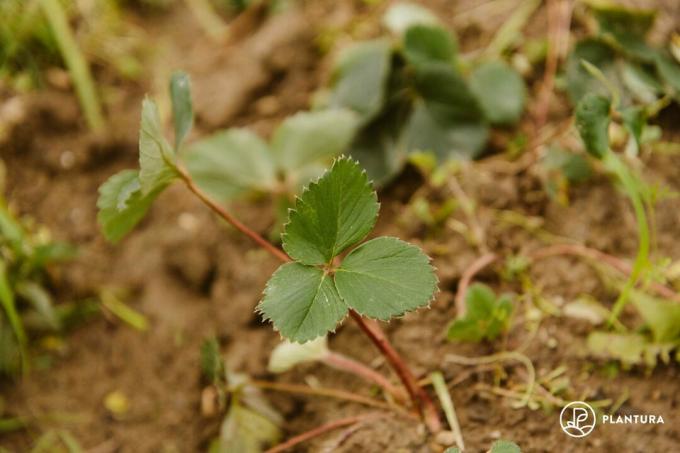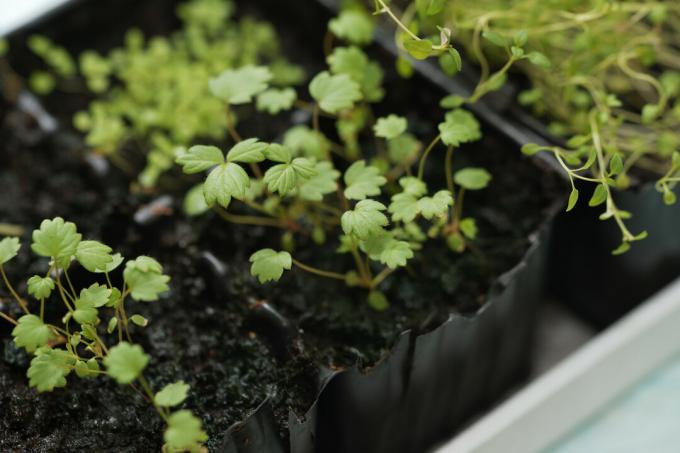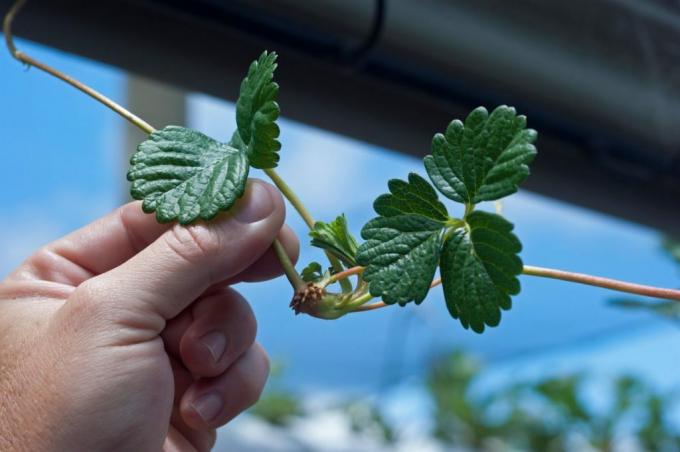Strawberries can be self-propagated in different ways. In addition to the rapid propagation through offshoots, you can also sow the small nuts.

The tiny yellow-green seeds on the outside of the strawberry (Fragaria) are actually called nuts. Therefore, from a botanical point of view, the strawberry is not actually a berry, but an aggregate fruit. Especially with monthly strawberries, which rarely form runners, these nuts are used for propagation. But all other strawberry plants can theoretically be reproduced via their nuts. However, propagating via stolons is far easier and has another one significant advantage: The offshoots (stolons) are quasi clones of the mother plant and thus grant varietal identity. In the following we will show you how to properly propagate strawberries both by nuts and by runners.
Multiply strawberries: sow nuts
To obtain the nuts, the fruit skin is peeled off thinly and dried. If the entire fruit is crushed instead, there is a risk that it will start to rot. When the seeds have dried in June or July, they can then be sown directly. It is advisable to place a few seeds in a pot. This is ideally with a 1:1 mixture of sand and a high quality
Organic herbal & seed soil filled. The seeds are only lightly covered with the soil mixture.The optimal germination temperature is between 15 and 18 degrees Celsius in a warm and humid climate. Especially in midsummer, germination is more likely to succeed if the pot is not in full sun and is therefore better protected from drying out. Germination takes two to four weeks. When the seedlings have developed about three leaves, they can be separated and planted out in nutrient-rich soil. Seeds should not be sown later than the end of July, as the young plants need a certain size to survive the winter well. Sowing in spring is also possible. Monthly strawberries that are sown in spring can produce fruit as early as July.

Summary Propagating strawberries through nuts:
- Strawberries that do not form runners, e.g. B. some monthly strawberries can only be propagated in this way
- The skin of the ripe strawberries is removed and dried
- Seeds can be sown again until mid-July, otherwise not until next spring
- During germination, temperatures between 15 - 18 °C should prevail (if necessary, shade)
Propagate strawberries via runners
The best time to propagate via runners is between late July and early August. All offshoots that are already rooted can be separated from the tendril to the mother plant, carefully lifted out and immediately replanted. Children that have not yet formed any or hardly any roots are best planted in small pots but still remain attached to the mother plant until the pots are fully rooted are.
tip: Strawberries have an increased need for potassium and should therefore be placed in a nutrient-rich soil like ours Plantura organic tomato & vegetable soil to be planted.
Most strawberry plants have more than one stolon. The offspring closest to the mother plant are usually the strongest and largest. These have a higher chance of flowering right next year. At the time of the strawberry harvest proven, especially in early maturing strawberry varieties.

Common mistake: Plants that bear only a few fruits often produce the most children. After all, you have energy left over to generate these. If you have not marked the well-bearing plants, you tend to propagate the poorly bearing plants with their many children.
If you want to get a particularly large number of offshoots from a plant, all of the flowering shoots on this plant can be broken off. In this way, the plant does not have to divide its forces between fruit and stolon formation and can produce more children. This procedure is practically only possible if a very good harvest was determined and marked on the corresponding plant the year before. Since the yield in the same bed decreases sharply from the third year, this procedure is recommended in the third or fourth year in order to plant the best offshoots in another bed. When choosing the new bed, you should make sure that there were no types of vegetables that could be attacked by Verticillium wilt (potatoes, cucumbers, cabbages Etc.). All runners should be in the new bed by mid-August at the latest. Later, the plants only grow poorly.
What to look for when propagating strawberries by suckers:
- Mark plants with good yields and tasty fruits with sticks or labels at harvest time
- Select only children from healthy plants
- Replant already rooted Kindel directly (between the end of July and mid-August)
- Plant unrooted runners in a small pot (5-10 cm diameter) and leave them with the mother plant for a while; Separate from the mother plant in mid-August at the latest and plant in the bed or overwinter in the pot in the basement (don't forget to water!)
Here you will find all information on how to propagate your freshly propagated plants Strawberries overwinter and bring you successfully through the cold season.
